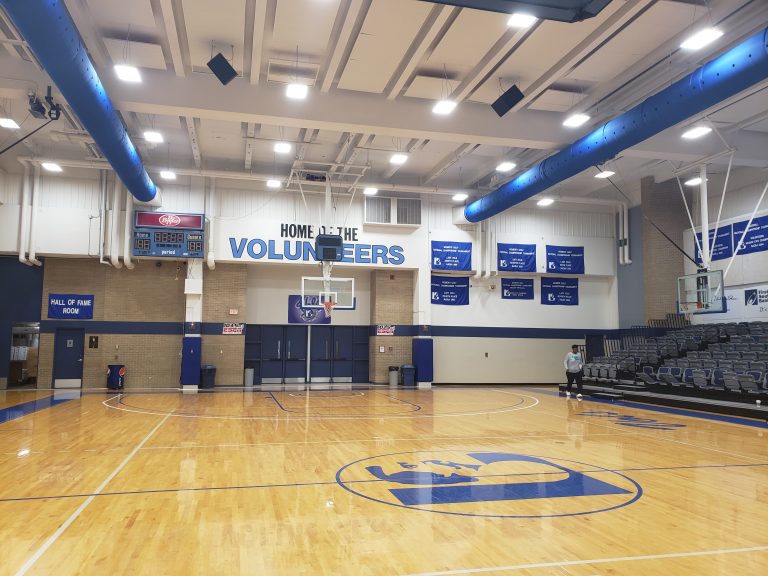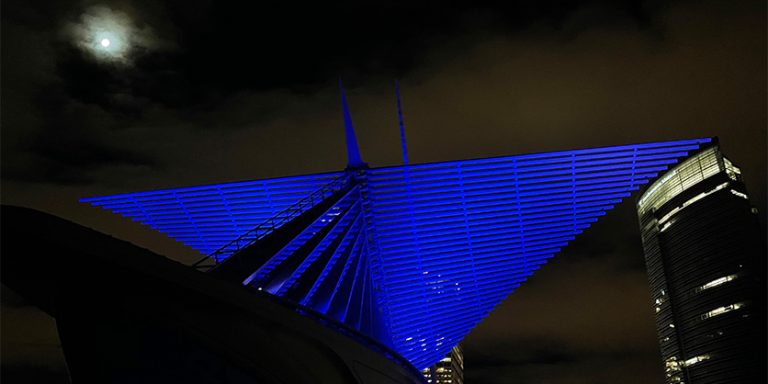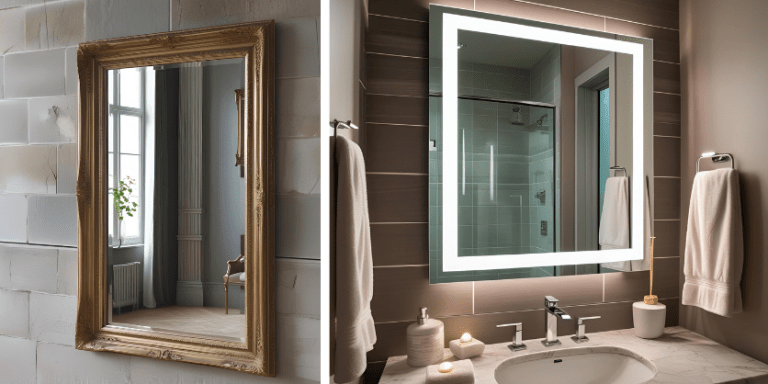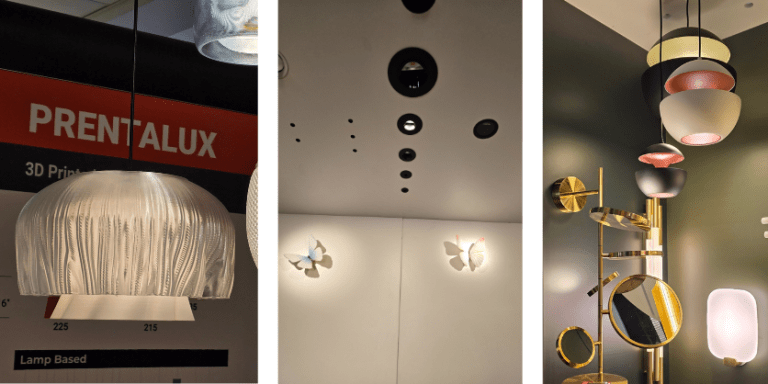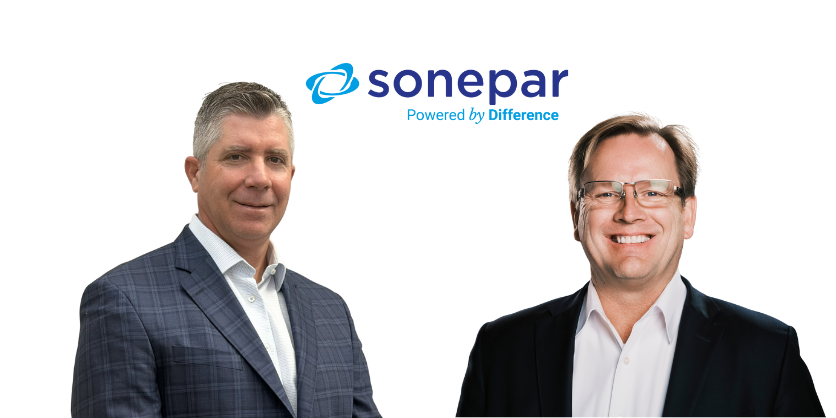Navigating the Challenge of Light Pollution in a Developing Country: Balancing Modernity and Sustainability
Senior Lighting Designer, IALD associate

Summary
In Vietnam, about half of the lighting projects are awarded to foreign consultants, reflecting the strong influence of developed nations on a country caught between tradition and modernity. This blend is evident in the urban nighttime landscape, where traditional sodium street lighting fixtures coexist with modern media facades and laser technology, sometimes creating a chaotic brightness competition. Over the past decade, there’s been a significant reduction in darkness in sensitive areas, rapidly changing the nighttime experience in both urban and rural areas. Vietnam is advancing quickly, with sustainability efforts being shaped today.
In June, Fanny Soulard’s research was presented at the IALD Enlighten Europe Conference, focusing on lighting pollution in developing countries. The conference emphasized the need for early involvement of lighting experts in projects and the importance of integrating local knowledge. Embracing diversity and combining expertise can enhance practices and mitigate light pollution more effectively. So …
#What Does it Take to Develop a Sustainable Lighting Project in a Developing Country?
In Vietnam, roughly half of the projects are awarded to foreign consultants, highlighting the significant influence of developed nations on a country still balancing between tradition and modernity. Sodium street lighting fixtures coexist alongside cutting-edge media facades and laser technology in the nighttime cityscape, blending traditional lamp technology with modern lighting innovations and occasionally resulting in a chaotic brightness competition. Over the past ten years, there has been a significant decrease in the darkness of sensitive areas, leading to a rapid change of the nighttime experience in urban and rural regions. Vietnam is making rapid progress, and the future of sustainability is being determined today.
When I left France, lighting pollution was a major concern in the local industry, with recent regulations being put into place following the Decree of 27 December 2018 on the prevention, reduction and limitation of light pollution. This decree stands as a crucial standard in Western Europe for safeguarding the darkness of nighttime by regulating the emission of light in outdoor areas. Upon my arrival in Vietnam, I was eager to keep on the same dynamic, but I encountered unexpected challenges and a lot of frustration in my efforts to implement sustainable practices.
This has led me to engage conversation with a variety of lighting enthusiasts and key figures in the local market, such as lighting designers, engineers, architects, luminaire suppliers, as well as astronomers, students, and environmental specialists.
Together with Han Ngo, lighting designer at Bowen Engineering, Tran Kien Duc, account manager at Cara Lighting, Quynh Anh Nguyen, lighting design leader at DJCoalition, Huy Cuong Nguyen, smart system specialist at LK Technology, Nguyễn Hoàng Trung, advocate for the Dark Sky Association in Hanoi and Nguyen Thi Minh Tam, student in the University of biology in HCMC, we have discussed why Vietnam, despite its multicultural asset and international influence with sustainability, still significantly struggles to effectively address lighting pollution.
- Education and Awareness
Educational disparities play a key role, as Vietnamese students often lack specific training in lighting pollution. Despite interest, they face language barriers, with most resources available only in English. This means that understanding lighting pollution in Vietnam typically requires English proficiency, limiting local access to crucial information.
“We can’t protect what we don’t know” is also something very common in Vietnam. Astronomical societies are actively promoting the preservation of the night sky, while environmentalists warn of possible health hazards for humans, as well as for flora and fauna. However, the sources of light pollution and the parameters of acceptable practices are still not well defined in a society where artificial light is often associated with modernity and positive development.
- Economic Pressures
Developing countries often face fragile economic conditions, influenced by both international events (viruses, wars) and domestic factors (corruption, changes in laws). Without proper governmental support during times of rapid change, project developers are under pressure to protect their investments, leading to shorten project schedules and financial resources. Projects investors rarely include sustainability targets in contracts and scope of service. This is not conducive to sustainable-friendly planning, as it demands changes in work habits and the acquisition of new expertise.
From most of consultant perspective, creating the opportunity to implement sustainable practices in projects and convincing the client to support this, can be quite challenging.
- Market Limitations
There is a limited availability of quality lighting fixtures in the market and lack of skilled construction workers. Apart from Chinese products, imported lighting equipment is subject to a 45% tax and long lead times, making it difficult to work with high-quality optics, accessories, and light sources.
To ensure project feasibility, designers often must compromise on design quality due to cost constraints by implementing cost-effective strategies. If they do not make these adjustments, the construction process will force them to do so.
It is crucial to also consider the needs of construction workers, including factors such as lack of tools, time, and training, to ensure that the project can be realistically executed. This involves simplifying the integration and setup of luminaires, keeping standard specifications for luminaires, and ensuring that lighting equipment is easily maintainable, especially in areas prone to storms and flooding. Relying solely on technical criteria to establish a sustainable strategy is not realistic on a Vietnamese context.
- Conflicting Standards
While Vietnam introduced its lighting standards a decade ago, many designers still prefer to follow standards from other countries, considering the local ones outdated. This discrepancy between local standards and guidelines can result in differences in brightness target and lighting ambiance.
Foreign consultants usually utilise their own standards, implementing criteria from a developed nation to a developing one. This can lead to challenges in aligning aspects such as uniformity, glare management, accessibility for individuals with disabilities, consideration of crime risks, and more. Such diverse approaches can greatly heighten the sense of disruption to any collective plan, crucial for long-term viability. Each project has the potential to contribute to light pollution or fall prey to it. In the absence of a national agreement, individual endeavours may quickly falter.
- Cultural Aspirations
Vietnam’s aspirations to join the ranks of developed countries, and exemplarity inspiration from developed cities like Singapore, Hong Kong, Tokyo, or even New York City, often leads to excessive lighting expectation from investors and clients.
As a former French colony, Vietnam’s admiration with European architectural styles has also led to new housing developers imitating heritage architecture, including lighting fixtures typologies that have been banned in Europe due to their contribution to light pollution and glare.
- Trust Issues
The perception that foreign expertise is superior to local knowledge is another issue. Projects with large budgets are mostly designed by foreigners, or consultant led by a foreign management. This is likely linked to the post-war period of subsistence, when Vietnam’s borders were still closed for business. Vietnamese entrepreneurs were striving to boost the economy with very limited resources. During that time, quantity often took precedence over quality, leading to disappointment among clients and fostering a sense of distrust among domestic market players.
Once Public-Private Partnerships were introduced in Vietnam, clients began to seek the services of international consultants to bring about more sophisticated resource and tool management, as well as better coordination between disciplines. However, this shift has led to controversial outcomes, such as ignorance of cultural differences, lack of physical coordination during construction, language barriers, and unequal treatment of local and international expertise.
- Global Influence and Local Challenges
In a globalised world, professionals in the lighting industry have the ability to impact how developing nations tackle light pollution through setting a positive example, promoting best practices, fostering direct partnerships, and facilitating educational connections. While establishing a universal definition of good lighting practices and identifying what to avoid is relatively straightforward, the successful implementation of solutions requires significant adaptation to the local market, by engaging local stakeholders.
In most of the iconic lighting projects developed within the city, foreign consultants typically handle the conceptualisation and design phases of a project, while local actors are responsible for execution and construction. This division of labour can sometimes lead to miscommunication and discrepancies with local customs and contexts. The issue of light pollution goes beyond technical aspects and is closely intertwined with cultural, economic, and political considerations. Therefore, it is crucial to involve local stakeholders in addressing these factors, such as by developing an Intercultural Intelligence methodology that emphasises ongoing coordination throughout the project and values the expertise of all parties equally.
- Resilience and Adaptation
Resilience, the ability to adapt to change, is a valuable strength in implementing large-scale involvement strategies, especially considering the importance of resource conservation. During the hottest months, major Vietnamese cities have reduced street lighting to prioritise air conditioning needs in resource and adjust to energy shortage from the waterpower station. During lighting shortage, Vietnamese citizens continue with their daily routines or make minor adjustments. Citizens adapt readily, showcasing resilience and lower electricity dependence compared to developed nations.
Resilience emerges as a valuable trait that can serve as a source of inspiration for developed countries that frequently rely heavily on their government resources.
- Cultural Connections
Vietnamese culture is deeply intertwined with celestial elements, as evidenced by the celebration of Tết and the Mid-Autumn Festival following to the lunar calendar instead of the solar one. These cultural connections to the moon have resulted in various beliefs that stress the importance of preserving dark skies in the Vietnamese culture.
Employing cultural narratives (as most of local designers tend to do) to tackle the issue of light pollution may be more effective in engaging individuals than relying exclusively on statistics and scientific data. By rendering complex subjects more relatable and comprehensible, individuals are more likely to embrace the message. Storytelling offers numerous advantages.
Firstly, from a cultural perspective, emphasising storytelling can help clients avoid uncomfortable situations stemming from a lack of familiarity and knowledge on the subject, which is often viewed as a cultural “faux pas.” Moreover, storytelling provides a more constructive means of engaging individuals in a project strategy and approach. It emphasises the potential benefits and positive outcomes of a project, rather than focusing on potential losses. Clients are typically more receptive to an approach that highlights success rather than one that focuses on avoiding failure.
Additionally, narratives are more flexible than numerical data and can be easily customised to suit a specific context, particularly in developing countries where the nighttime environment can change rapidly.
Lastly, it is crucial to recognise that lighting serves as a medium that should evoke emotions and experiences; thus, any solutions devised must consider this aspect to ensure their effectiveness.
- International Collaboration and Knowledge Sharing
Last June, I presented this research at the International Association of Lighting Designers (IALD) Enlighten Europe Conference titled “Lighting Pollution in Developing Countries: Why We Should All Feel Concerned.”
The IALD, established in 1969, is a non-profit organisation with a global network of over 1,500 lighting design professionals. The association aims to foster educational sessions and meaningful discussions within the lighting industry. This conference provided a platform to showcase the perspective and expertise of professionals from developing countries, who are often underrepresented in such international events.
It was also encouraging consultant teams involved in developing countries projects to involve lighting expert as early as possible in a project process and engage with local’s actors to navigate with cultural habits and nuances. Embracing diversity and combining expertise can enhance our practices and mitigate pollution more effectively than individual efforts.
About the Author

Fanny is a native French lighting designer who has been exploring and learning about lighting design with a transversal itinerary through the industry – working with lighting manufacturers, architects’ studios, lighting design studios, and an engineering company.
She has built her expertise by collaborating with a large panel of talented and inspiring people on three continents, embracing the richness of this diversity but also facing cultural misunderstandings and miscommunications sometimes. She loves thinking that a project is a team production result where all players have an equally important role and valuable expertise.
Since she joined Aurecon in Vietnam in 2020, she has been immersed in a multicultural company with branches located in a dozen of countries in the Asia Pacific area. She has used her professional environment as a playground to test Inter-Cultural Intelligence tools and mindsets to improve communication between the different teams and significantly upgrade her design content with a more holistic and inclusive approach.
Fanny has also worked as an Architectural lighting designer in Melbourne, Senior lighting designer and Lighting Specialist in France. She has a master degree in Applied Art and a technical degree in Space Design. She is also the Vietnam Ambassador for Women In Lighting.
Related Articles
WILD Launches Formal Membership – US Lighting Trends
ArchLIGHT Summit Releases Schedule of Events (uslightingtrends.com)


